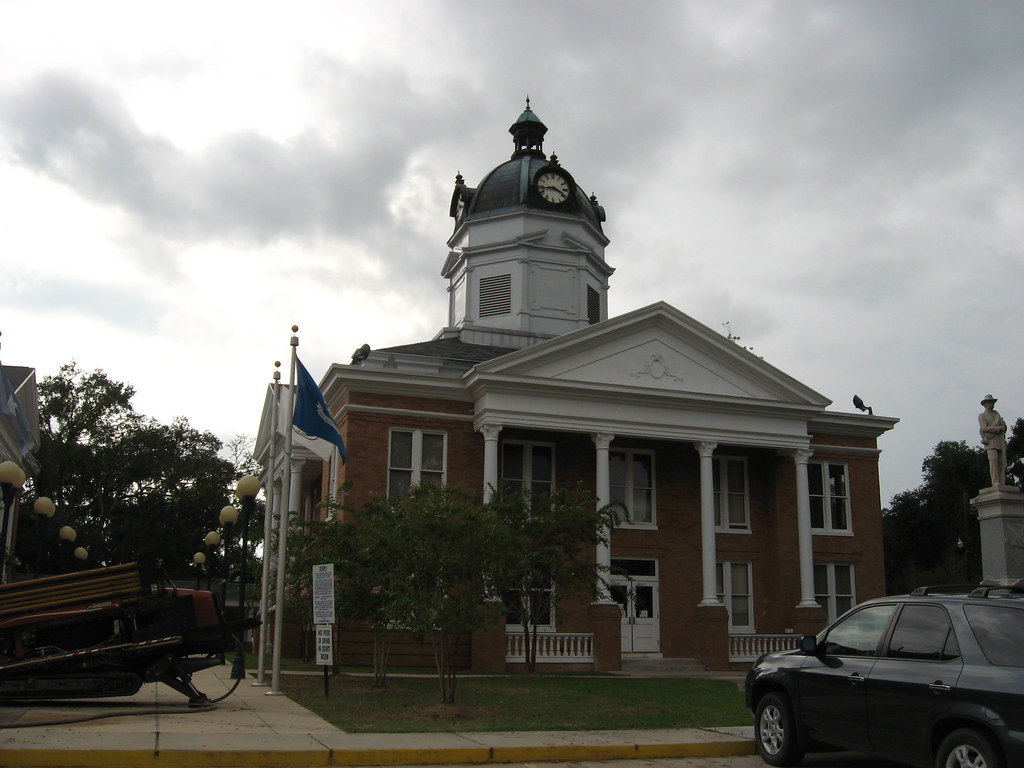United States counties don’t split frequently anymore. There was a time, however, when it happened regularly as populations spread from the east coast into the hinterlands. Typically, a territory or a state would begin with a handful of very large counties. State governments would then carve them into increasingly smaller units as population increased. Eventually it reached some semblance of a natural balance with the number of residents settling an area.
A steadily decreasing area bearing the original county name often carried on the legacy. The so-called State of Wayne in southern Missouri and it’s surviving diminutive vestige comes to mind. Of course, each new unit carved from the original needed a new name.
There are surprisingly few instances where an original county name carried forward to two successor units with a directional notation. I suppose, technically, it doesn’t happen in any counties because the instances I found are located in Louisiana and Alaska which have Parishes and Boroughs respectively. They tend to operate as counties by a different name and the U.S. Census Bureau counts them as such. So I’ll try to avoid the semantics.
Today I’ll discuss Louisiana.
East and West Carroll

A single Carroll Parish existed from 1832. That’s when it split from Ouachita Parish. Then in 1877, Carroll split into East Carroll (map) and West Carroll (map). I had trouble locating a definitive source to explain the split although I think I could infer the reasons. That was typical of my attempt to research the histories of Louisiana parishes. There just didn’t seem to be much information available online as compared to other areas I’ve investigated.
The eastern side of Carroll relied more heavily on a plantation economy during the antebellum period prior to the Civil War. The western side attracted a larger population of white settlers of European descent. This resulted in a demographic and economic difference that formed the basis for a future split. The original Carroll Parish broke into East Carroll and West Carroll Parishes, cleaved along that approximate demographic line. It’s readily visible a century and a half later. The 2010 Census showed that 69.0% of East Carroll residents were African-American and 81.8% of West Carroll residents were white.
East and West Baton Rouge

The story of East Baton Rouge and West Baton Rouge is a little more complicated. The name goes all the way back to 1699 when Sieur d’Iberville led a French expedition up the Mississippi River. The explorers spotted a pole erected by local Native American inhabitants, possibly serving as a boundary marker between tribes, with animal parts attached to it. The location became “le bâton rouge” (the red stick) after the grizzly post.
The area was already split into two parishes on opposite banks of the Mississippi River when Louisiana joined the Union in 1812. Curiously, they called the two parishes Baton Rouge and East Baton Rouge at that time. It’s perhaps self-evident why the “west” designation later appeared. The rapidly growing city of Baton Rouge began to dominate and it fell within East Baton Rouge Parish. It quickly became the tail wagging the dog. It’s fascinating to watch the name and boundary changes on the Atlas of Historical County Boundaries for Louisiana.
The difference between the two remains today and it’s readily visible in the density of road infrastructure visible on maps. The eastern side of the river became the Louisiana state capital (map). The western side remained rooted in agriculture, particularly sugar cane, and lived in its neighbor’s shadow (map).
East and West Feliciana

Feliciana Parish existed as a single entity when Louisiana joined the Union but it split into eastern (map) and western (map) components about a decade later. If someone tells you they need to go to their happy place then they should probably travel to these parishes.
One often associates Louisiana with French and Cajun influences, but that’s not monolithic. Feliciana actually arose during an era of Spanish rule. It’s based on the Spanish word for happy (“feliz”). This corner of Louisiana had a complicated history as it passed between the control of Spain, France, and England multiple times during the turbulent era of the West Florida Territory.
I’m partial to West Feliciana Parish. It has an interesting little exclave like it’s neighbor further to the south (Split in Two: St. Martin Parish). However, I doubt inmates in nearby Louisiana State Penitentiary in Angola get much of a chance to ponder their proximity to that anomaly.

Leave a Reply